In an article published in the journal Science Report on April 28th, 2022, a team of Japanese scientists introduced a new study on reservoir calculation with dielectric relaxation at the electrode ionic liquid interface Sci tech daily points out that physical reservoir computing can be used to perform high-speed processing such as AI with very low power consumption. The ionic liquid reservoir computer can also provide efficient and flexible characteristics for edge calculation.

Study configuration - 1: optical micrograph of Au / IL / Au storage device
Recent trends indicate that more and more AI processing will need to be carried out at the edge level in the future - close to users and data collection sites, rather than running on remote computers / servers.
Such operations are characterized by high speed and low power consumption, while physical reservoir computing (PRC) has great attraction.
This paper introduces a tunable physical reservoir device based on dielectric relaxation at the electrode ionic liquid interface designed by the research team of Japan University of science.

Research diagram - 2: dynamic current response of storage device to mode input
Under the leadership of Professor Kentaro Kinoshita of the University, doctoral student sang Gyu KOH and senior researchers Hiroyuki Akinaga, Hisashi Shima and Yasuhisa naitoh are working together to make this technology more flexible and practical.
It is reported that PRC relies on the transient response of the physical system. It is a very attractive learning framework and can process time series signals at high speed with low power consumption. Previously, however, PRC systems had low tunability, which limited their signal processing capacity.
The new research breakthrough of Tokyo University of science is realized by using ionic liquids as an easily adjustable physical storage device - signals can be processed on a wide range of time scales simply by changing (optimizing) their viscosity.
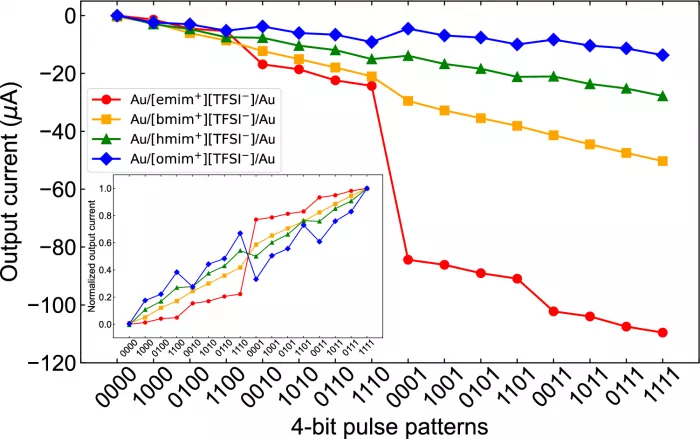
Research diagram - 3: output current extracted from dynamic response
SCI Tech Daily It is added that the physical storage calculation, which depends on the instantaneous dynamics of the physical system, can greatly simplify the calculation of edge artificial intelligence. Because PRC can store and process analog signals, it can effectively promote the use and analysis of edge AI.
However, the dynamic characteristics of the solid-state PRC system with a specific time scale are not easy to adjust, and are usually too fast for most physical signals. Due to the mismatch of time scale and low controllability, PRC is not suitable for real-time signal processing in real environment to a great extent.
However, if liquid reservoirs are used to replace traditional solid storage, the problem seems to be solved - AI devices can directly learn the time scale of signals generated by the environment in real time, such as voice and vibration.
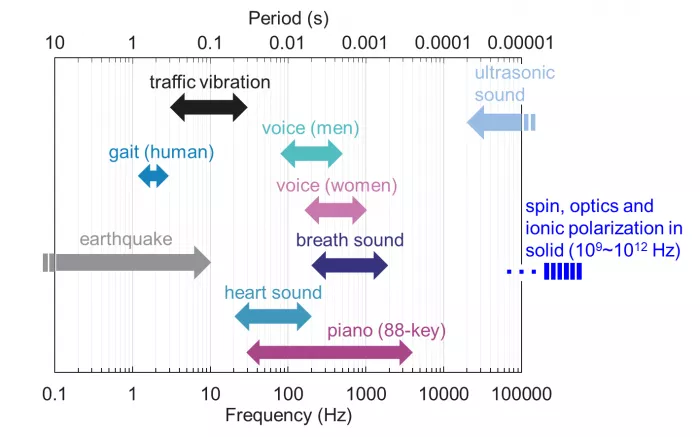
Common signal generation and time scale in real life scenes
Professor Kentaro Kinoshita explained that they chose ionic liquids based on stable molten salts, which are completely composed of free roaming charges.
The dielectric relaxation of ionic liquids, that is, how their charges rearrange in response to electrical signals, can be used as a memory, and is highly expected in the field of edge AI physical computing.
In this new study, the team designed a PRC system with organic salt ionic liquid (IL), whose cationic part (positively charged ions) can easily change with the length of the selected alkyl chain.
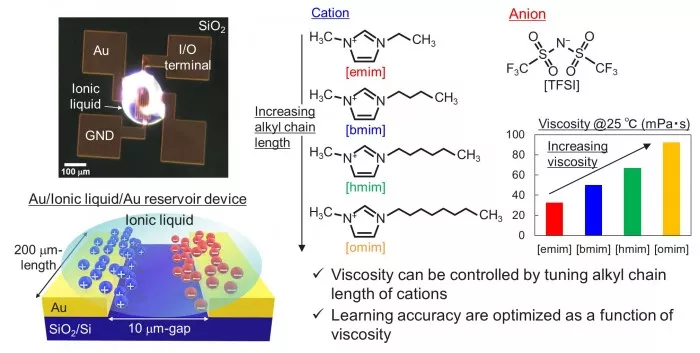
By adjusting the length of cationic side chain to change its viscosity, the signal processing range of ionic liquid PRC system can be tuned and optimized.
More specifically, the research team made a gold gap electrode and filled the gap with IL. The results show that although the time scale of the reservoir is complex in nature, it can still be directly adjusted and controlled by the viscosity of IL (depending on the length of cationic alkyl chain).
Obviously, it is much easier to change the alkyl groups in organic salts. Based on this, researchers have a set of controllable and designable systems (applicable to a series of signal processing ranges), thus opening up a new route for future extensive computing applications.
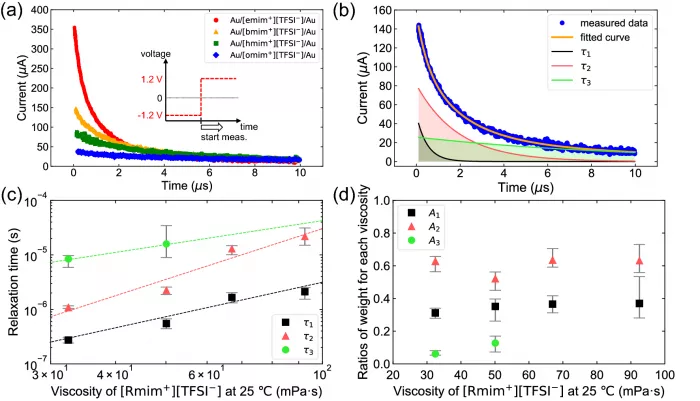
Figure 4: measurement of transient current response as a function of cationic alkyl chain length
In addition, by adjusting the length of alkyl chain between 2-8 units, scientists at Tokyo University of science also achieved 1-20 μ S.
As a demonstration, the researchers took the AI image recognition task as an example to prove the effective adjustability of the system. After receiving an input signal based on a handwritten image, it can μ S.
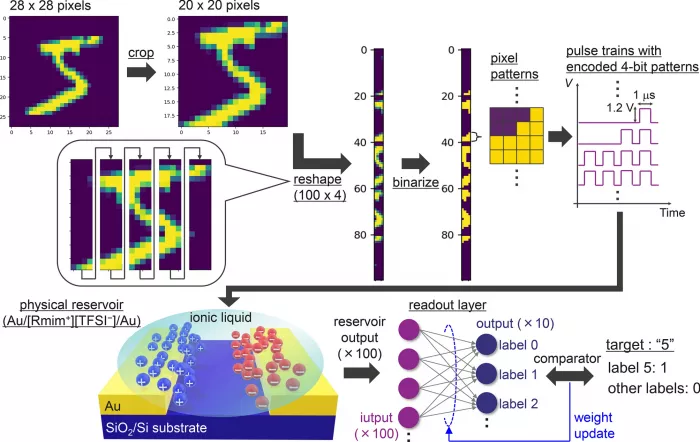
Research diagram - 5: schematic diagram of data processing sequence for image classification task
By increasing the length of the side chain, the research team made the transient response closer to the range of the target signal, and the recognition rate increased synchronously with the increase of the alkyl chain.
With current at about 1 μ Compared with the case of relaxation to its value within s, IL with longer side chain and relaxation time can better retain the historical data of time series, thus improving its recognition accuracy.

Research mapping - 6: image classification prediction accuracy
When the longest side chain with 8 units is used, the recognition rate reaches a peak of 90.2%. Details of this study have been published in [scientific reports] published at the end of April( https://www.nature.com/articles/s41598-022-10152-9 ) 》Up.
The original title was reservoir computing with dielectric relaxation at an electric – ionic liquid interface.